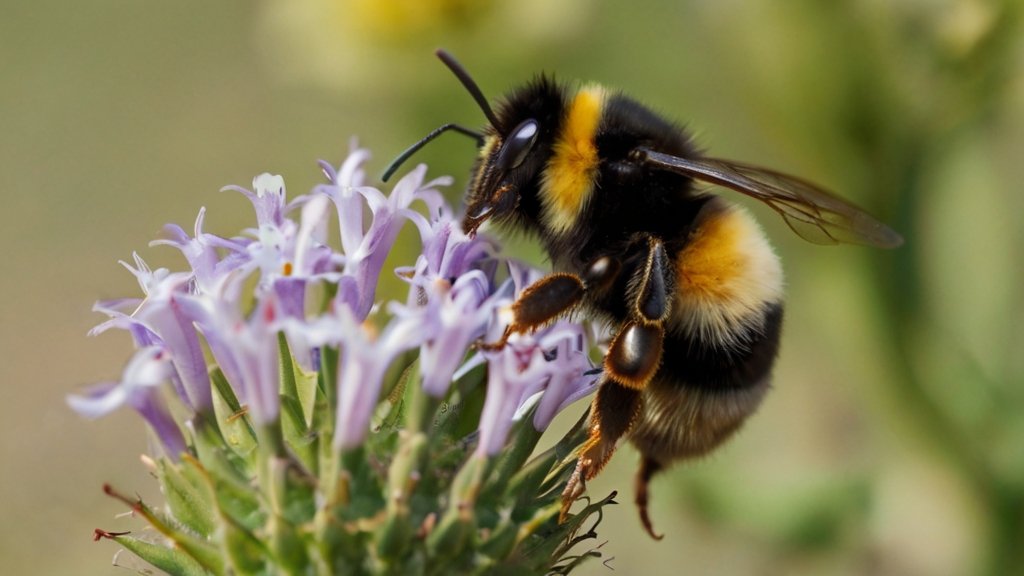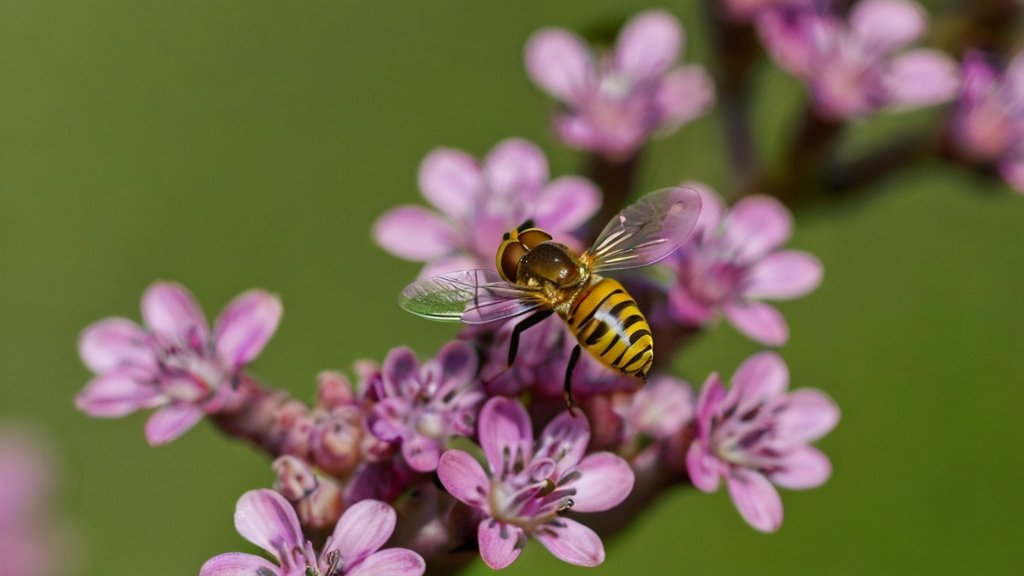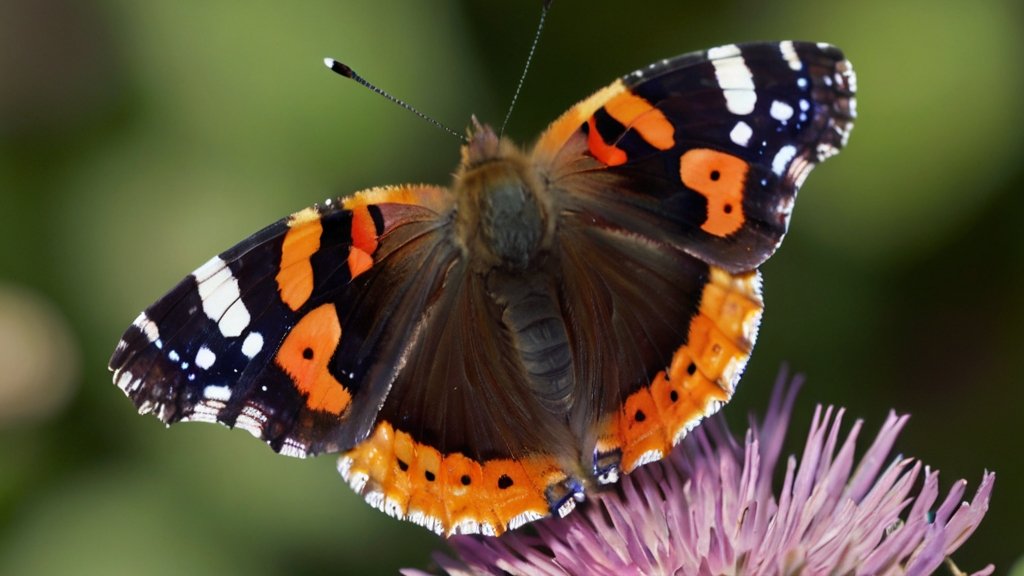Many gardeners dread the sight of insects on their plants, fearing that they will cause damage and disease. However, not all insects are pests. In fact, some of them can be very helpful for your garden. By attracting these beneficial insects, you can reduce the need for chemical pesticides and create a more natural and balanced ecosystem.
What Makes an Insect Beneficial
A beneficial insect is one that provides a service to the gardener, such as pollination, predation, or parasitism. Pollination is the transfer of pollen from one flower to another, which is essential for many crops and flowers to produce fruits and seeds. Predation is the act of killing and eating other insects, which can help reduce the population of pests. Parasitism is the act of laying eggs inside or on another insect, which will eventually kill the host and prevent it from reproducing.
How to Attract Insects to Your Garden
There are a variety of beneficial insects in the UK so let’s consider each one in turn and find the best and easiest ways to make them feel welcome in your garden.
1. Ladybirds. There are around 40 species of ladybirds in the UK but by far the most recognizable is the seven-spot ladybird which has seven black spots on a red body. The diet of ladybirds consists primarily of aphids along with other small insects. Aphids live by sucking on leaves and stems of plants often causing discolouration, stunted growth and damage. Having ladybirds in your garden can reduce or prevent this and they are so effective they have been introduced outside their range in efforts to control pests.
Ladybirds also like pollen so there are plenty of plants you can grow that will attract them. Good examples are dill, dandelions, chives, nasturtiums, lavender and geraniums. You can also buy or make yourself a ladybird house which is a great way to make them feel welcome in your garden.
In turn ladybirds form part of the diet of birds, frogs and dragonflies all of which you might wish to encourage to your property, so the benefits of extra ladybirds spread through the natural food chain.

2. Bees. Most people are surprised to find that there are more than 200 types of bees in the UK including over 20 species of bumble bees. Somewhere around 90% of species are solitary bees who are non-aggressive. Most of the males do not even have a sting. Bees are probably the most important insect we have as without them pollinating our fruits and vegetables we would struggle to grow the crops we depend on to live. It’s a worrying thought that bee populations have been falling and some species of solitary bees have totally disappeared. There are several reasons for this including climate change, development causing loss of habitats and pesticide use. On a brighter note some species of bumble bees have done well in recent times but it remains important for us to preserve our bee populations and we can all do that by making our gardens more inviting for them.
So, what can you do to make your garden a bee friendly environment?
When you choose your shrubs and flowers consider which types and colours they like best. Bees prefer blues, yellows and whites to brighter colours and favourites include lavender, buddleia, lilac, geraniums, foxgloves and certain types of hydrangeas. They also love ivy, but most gardeners certainly don’t!
Why not make or buy a bee hotel which solitary bees will use for nesting. They are simply hollow canes held tightly together in a pot or frame that can be hung in a sunny spot near to pollinating flowers or shrubs. You can use any sort of hollow cane cut into short lengths. When a bee uses one it is easy to spot as the end of that tube will be sealed off with mud and it will stay like that until the young bee is ready to emerge.
Perhaps you could also create a natural wood pile in a corner of the garden which will be a suitable habitat for solitary bees.
Finally, as much as possible stop using any pesticides in your garden.

3. Butterflies. People love to see butterflies of varying colours in their gardens but aside from the enjoyment they are also a very beneficial insect to have. They also pollinate flowers and represent a very important part of the food chain with birds eating millions of moth and butterfly caterpillars every year.
Attracting butterflies to your garden is best achieved by planting shrubs and plants that they are known to love notably the buddleia which is known as the butterfly bush or lavender. A wide range of flowers including marigolds, buttercups, bluebells and sunflowers will also attract them. Ideally these should be planted in sunny spots.
4. Hoverflies. They are another pollinator and around half of their species feed on aphids as well as other plant damaging pests, so they are an important contributor to having a healthy garden.
You can attract them to your garden by providing a wood pile or a small area of stagnant water which is known as a hoverfly lagoon. They also like certain types of flowers including dandelions, buttercups, ivy and fennel.

5. Solitary Wasps. Wasps are very useful as a natural pest controller eating flies, aphids and caterpillars. Social wasps can be a great nuisance especially in late summer but there are also many solitary types that will benefit our garden without causing the slightest problem.
They like a variety of plants that they like including thistles, marigolds and daisies.
6. Lacewings. Not a very well-known insect but one which does have its benefits for gardeners. In the UK there are two types of lacewings green and brown. There are 14 species of green lacewings and 29 of brown. The adults eat some pests but the real benefit from lacewings comes from the larvae which eat aphids at a rate far faster than ladybirds do.
A variety of flowers will help attract them as will the presence of a lot of aphids.
7. Ground Beetles. There are at least 40000 types of these beetles in the world and over 300 species in the UK. Usually black or brown they grow up to about 25mm.They are predatory and eat a variety of pests including aphids, caterpillars, fly and moth eggs and slugs.
The best way to attract these helpful species to your garden is to create a wood pile or a compost heap. You can also leave a patch of longer grass or a leaf pile. If it looks untidy or wild they will probably love it!
8. Rove Beetles. Another ground dwelling beetle which has somewhere of the region of 1000 different types in the UK. They grow up to 30mm and most of them are black although some have more distinctive colours. They eat a wide range of things including aphids, fly and moth eggs and caterpillars. They will also eat dead animals or organic decaying matter. In turn rove beetles form a part of the diet of bats, birds and amphibians.
To attract them build a woodpile or compost area. Also limit the use of pesticides to which they are very vulnerable.
9.Earwigs. Earwigs are a bit of a mixture in that there are benefits from having them but also, they can cause damage and be classed as a pest. On the plus side they are very effective at eating aphids and consume pests such as fly eggs, mites and slugs. They are very useful in protecting fruit trees where they eat aphids without damaging the crop.
The downside of earwigs is that they can cause a lot of damage by eating leaves of garden flowers. Because of this it’s unlikely that most gardeners would seek to encourage them.
Conclusion
We have a wide variety of useful insects in the UK and whilst ladybirds, bees and butterflies are instantly recognisable to most people others like lacewings, hoverflies and rove beetles are far less well known. They are equally useful to gardeners and all of them are easy to attract to the garden with a good choice of plants and creating a few simple things such as a woodpile or compost heap. A decent population of these insects will not only improve the health of your plants and shrubs it may also increase the range of other wildlife that visits. Happy Gardening.
